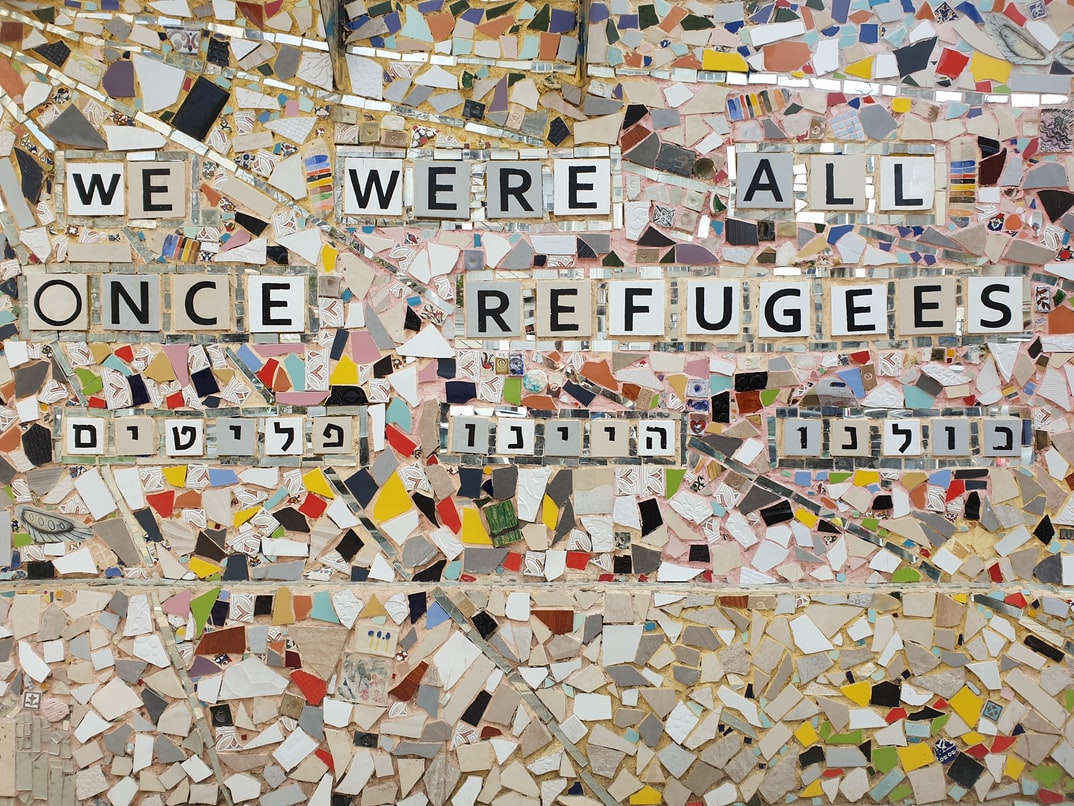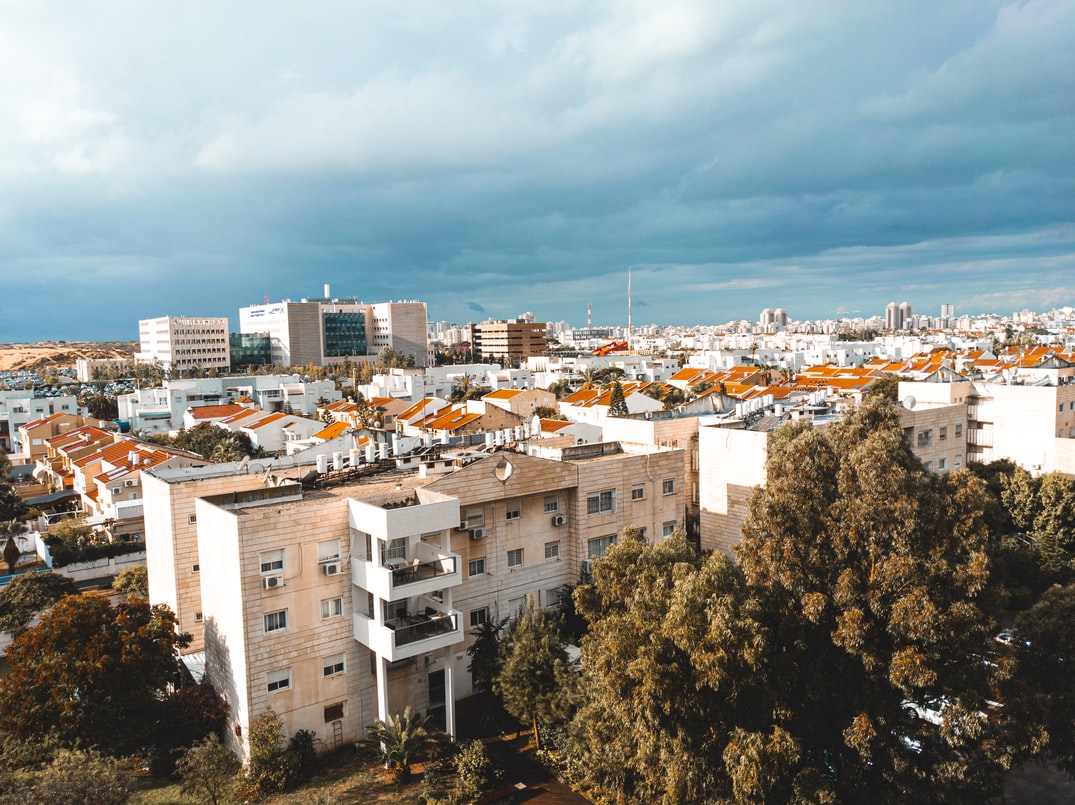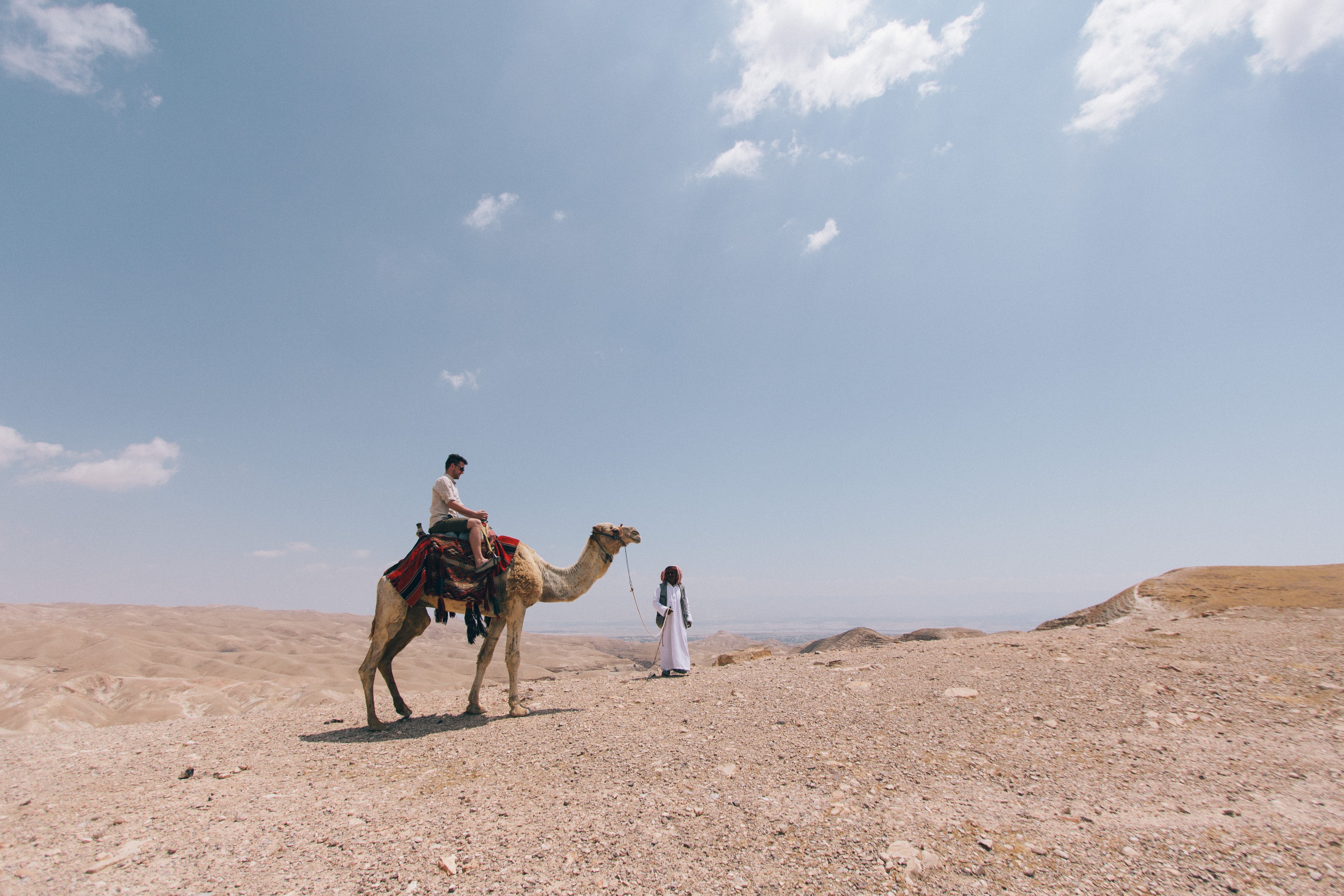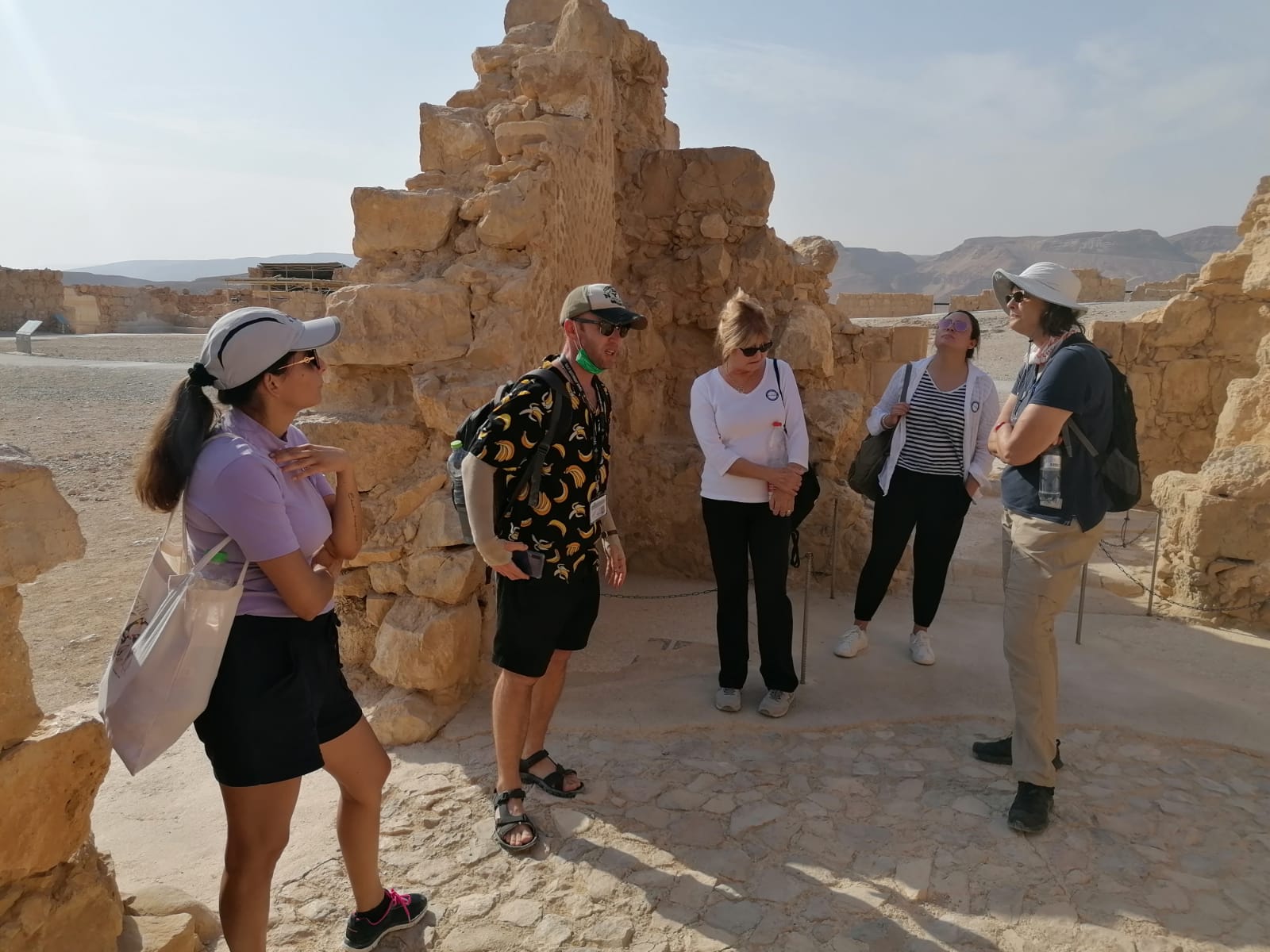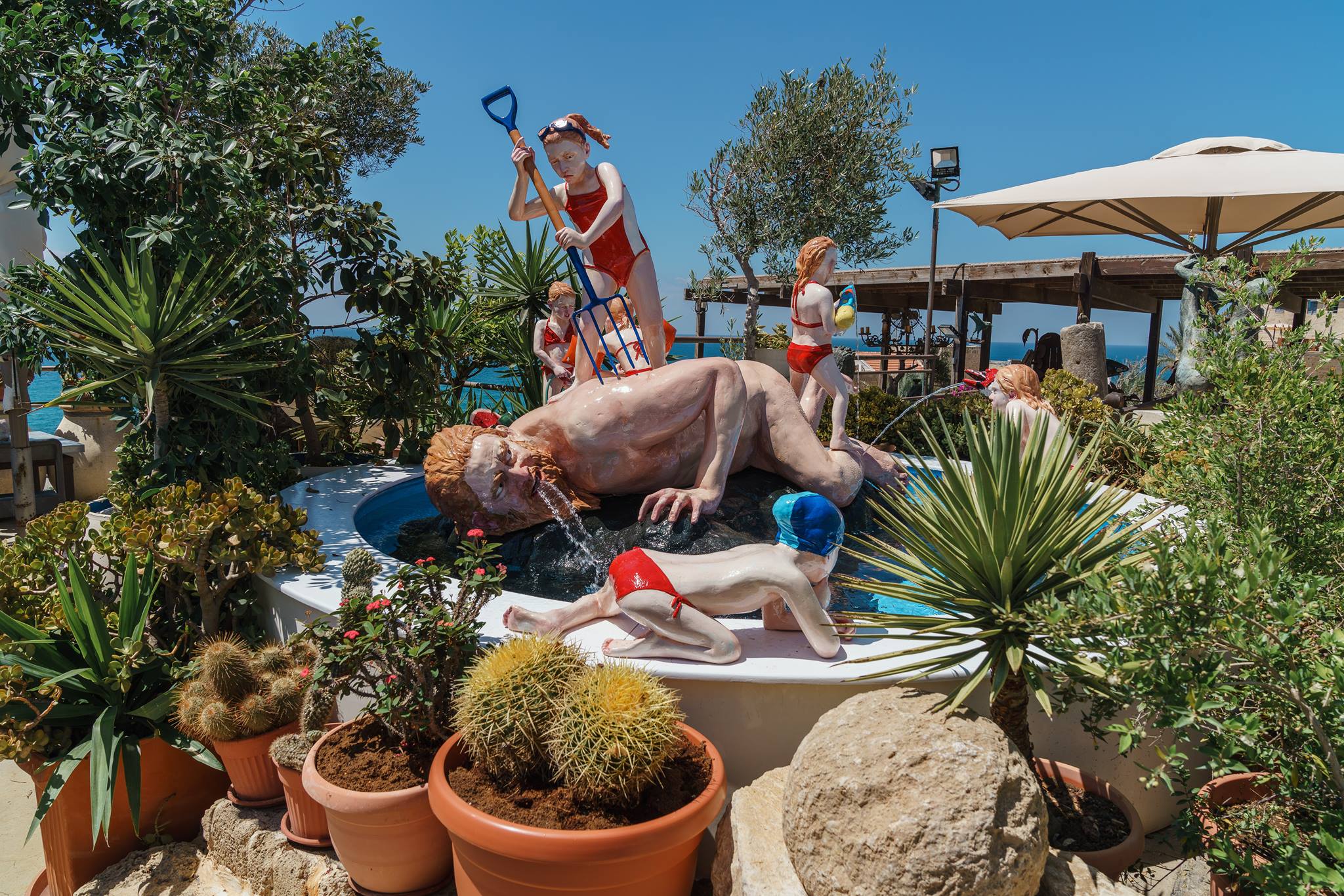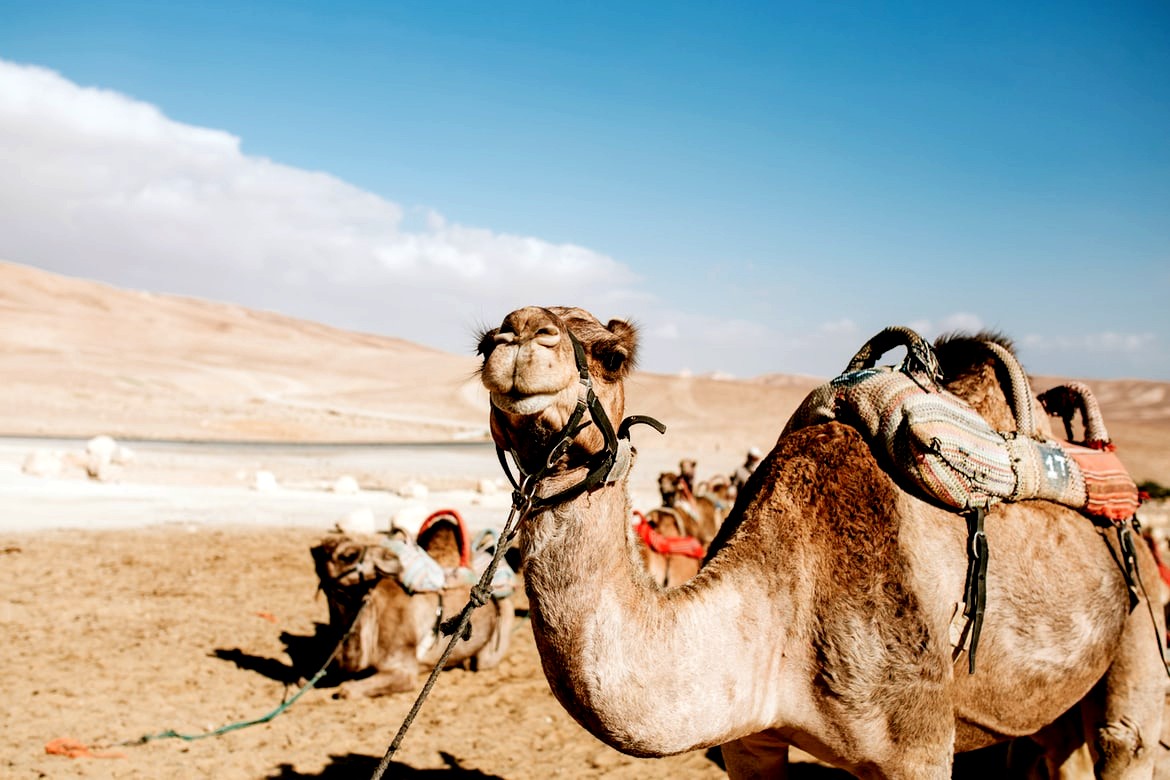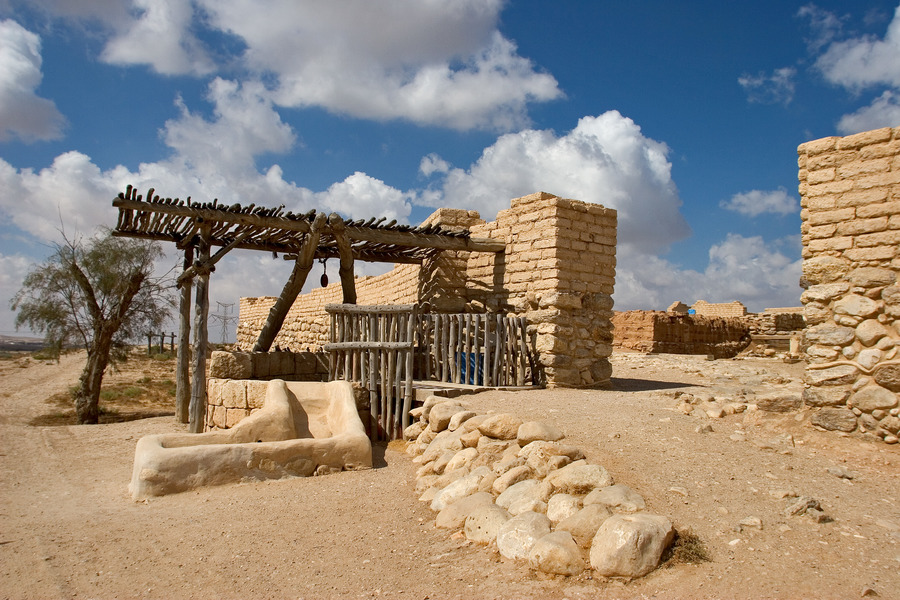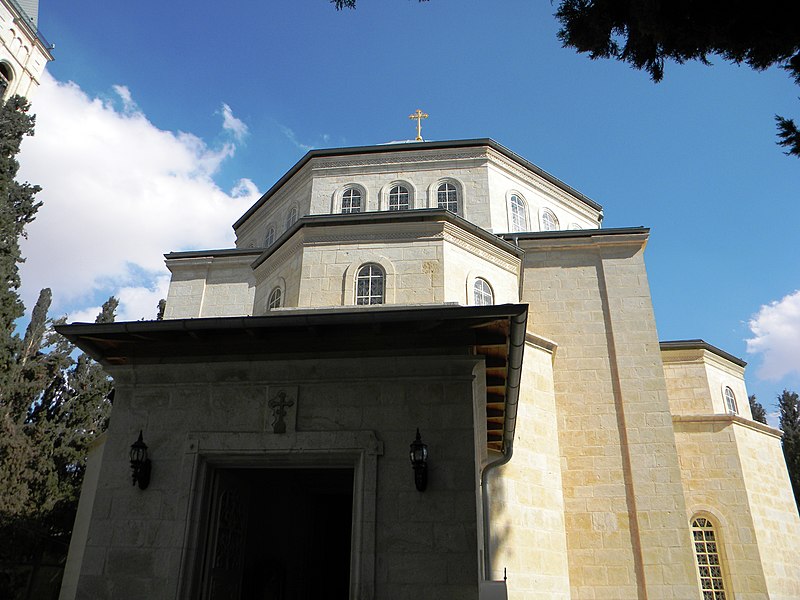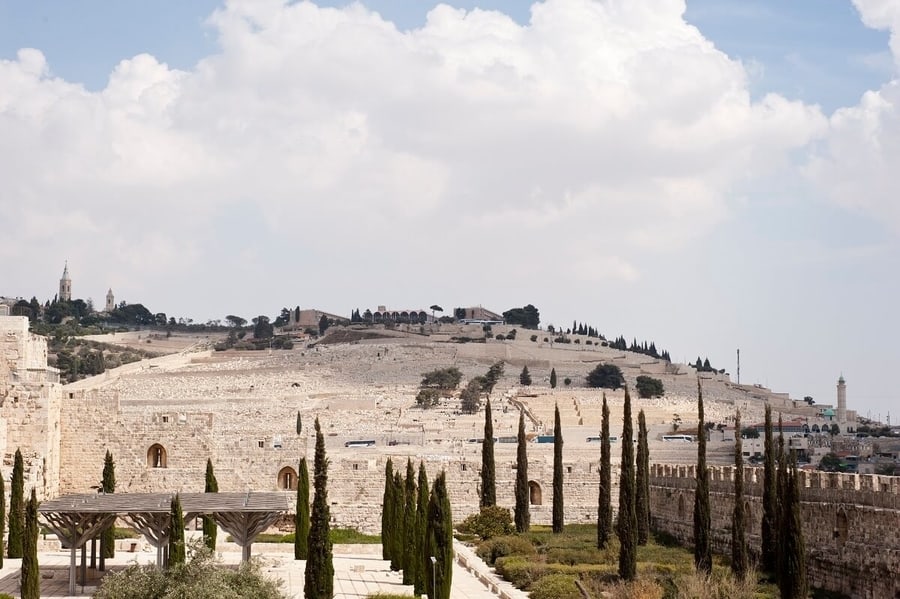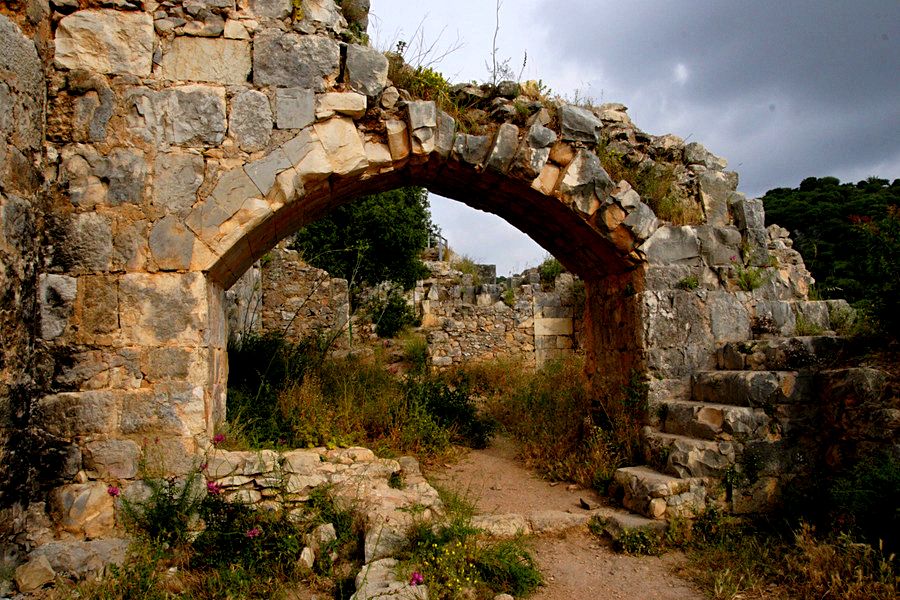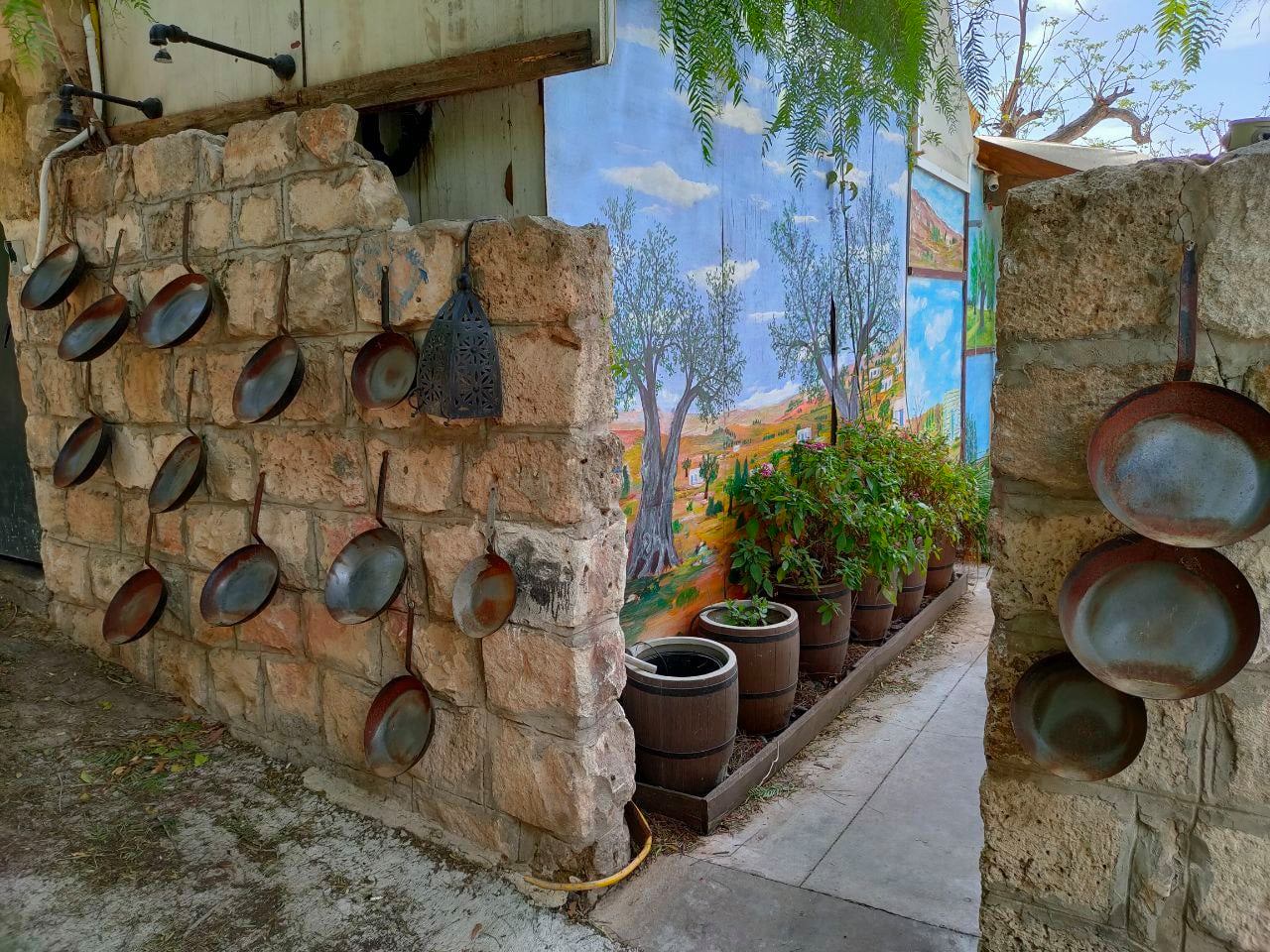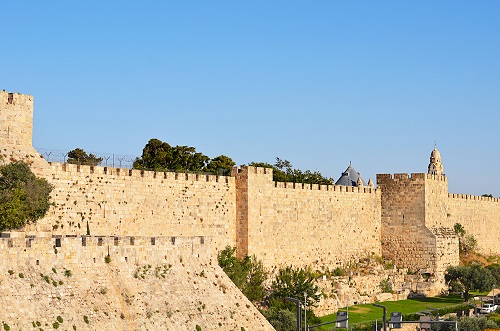Historical Events in Israel: From Abraham to Bar Kokhba
When visitors arrive in Israel today, they are often surprised to see an incredibly modern country, with gleaming highrises, raved-about cuisine, renowned academic and scientific institutions, and a booming hi-tech industry. Stereotypes about locals riding around on camels and not speaking English are quickly crushed as they realize that Israel is at the forefront of so much innovation, particularly the bustling beach city of Tel Aviv, with its 24/7 action.View of Tel Aviv from Jaffa. Photo byReiseuhuonUnsplashWhat makes this even more amazing is that Israel is an incredibly young country - not even an octogenarian in people terms! Created in May 1948, a huge amount has been achieved in these 73 years and who knows what lies ahead? But what about important historical events in Israel long ago?The fact is that whilst Israel, in many respects, is an incredibly modern country but it’s steeped in extraordinary history - it’s everywhere you go, in its seaports, Herodian cities, Crusader castles, Roman defenses, and Old City walls. Ancient Israel is thousands of years old, and in the time before it took for David Ben Gurion to declare independence in Tel Aviv, a great deal happened.We realize that, whether you’re a first-time visitor to Israel or you’ve been here many times, this can all be a little confusing, which is why we’ve decided to put together some ‘Top Ten’ list covering what we think are some of the most important events in ancient Israel’s long, chequered and glorious history. We are not scholars, so we’ll try and keep it succinct, but - remember! - Rome wasn’t built in a day, and neither was the Land of Israel. Here goes…Part One of our ‘Historical Events’ series, beginning with Judaism’s beloved Patriarch, Abraham.Cows in Shaar HaCarmel National Park, Israel. Photo credit: © Oksana Mats1. Abraham arrives in the Land of IsraelIt was Abraham, the father of monotheism (a belief in the One God) who was the first protagonist in the fateful story of the Jews. Commanded by God to leave his birthplace, he set off on a long and arduous journey to the land of Israel.Abraham, Isaac, and Jacob (his son and grandson) would become the three Patriarchs of the Jewish religion and the Hebrew Bible is filled with extraordinary stories about their lives. These include God’s blessing of Abraham (to make him the father of a great nation), the binding of Isaac, and Jacob’s stealing of his brother Esau’s birthright.Jacob would go on to have 13 children, 10 of whom would be founders of tribes of Israel. In the latter part of his life, famine forced the Israelites to migrate to Egypt, where Jacob would finally be reunited with his beloved son Joseph (owner of the fabled coat of many colors).Cave of the Patriarchs (Sanctuary of Abraham), Hebron, West Bank. Photo byDan RosensteinonUnsplash2. The Ten Commandments are given to MosesIn terms of major historical events in Israel, this really has to be up there. It was at Mount Sinai where Moses, Judaism’s most important prophet, received the Torah (which in Jewish terms means the first five books of the Hebrew Bible), including the Ten Commandments. These are considered to be the blueprint for the ethics and worship in Jewish life up until today - they are the laws that Jews (and also Christians) strive to abide.Without a doubt, Moses was an extraordinary hero of the Jewish people, who led the Jews out of slavery in Egypt (famously parting the Red Sea with his staff) and led them, after many years of wandering, to the Promised Land. As he stood at Sinai, he entered into a covenantal relationship with God and, as a result, delivered God’s words to his people. Moses is considered to have been the only person who ever saw God ‘face to face’ (atop Sinai) and his actions are also indicative of a renewing of God’s covenantal relationship with Abraham, long before.Sunset on Mount Sinai. Photo byVlad KiselovonUnsplash3. The Eras of King David and King SolomonThis really was a golden era, by any standards. Named ‘the United Monarchy’ period, it refers to the United Israelite kingdom of Israel and Judah, during the reigns of Saul, David, and Solomon, whose story is told in the Hebrew Bible. Scholars estimate that it lasted between 1047 BCE and 930 BCE. Under King David’s rule, the Judean dynasty was founded and all the tribes of Israel were united. Born a shepherd boy, he famously slew the giant Goliath with nothing more than a slingshot, then served at King Saul’s court as an aide. After going into hiding and living as a fugitive and “Robin Hood’ figure, he was anointed King at the age of 30. Following this, he conquered the city of Jerusalem, established it as Israel’s capital, and made the Ark of the Covenant the focal point of the city. David was a talented musician, poet, and lyricist, many of the biblical Psalms are ascribed to him and in prophetic literature, he is the forefather to the Hebrew Messianic Age. In Jerusalem today, there are endless references to David - his tomb, King David’s Tower, and the underground City of David, which is 3,000 years old.King David’s Tomb, Jerusalem, Israel. Photo credit: © Oksana MatsEven the Bridge of Chords (a striking architectural masterpiece, located at the city’s entrance) has been deliberately shaped to resemble his harp (its cables representing strings). After his death at 70, his son Solomon replaced him as King. Known for his ruthlessness in dealing with political opponents, he appointed close friends in positions of government and reinforced his position as King through military means (infantry, cavalry, and chariotry). Solomon was also both a master builder and a sage (hence the phrase ‘ the Wisdom of Solomon’). He was responsible for the erection of the First Temple of Jerusalem, the national and spiritual center of the Jewish people, as well as an enormous building program throughout the entire nation. Deemed wiser than any other sage, the Hebrew Bible's Book of Proverbs tells the famous story of his adjudication between two women, each claiming to be the mother of a baby, and his profound conclusion. Moreover, the ‘Song of Solomons’ - also in the Hebrew Bible - is an extraordinarily beautiful love poem, attributed to him. Today, Solomon is revered both in Judaism and Christianity for his wisdom and is regarded by Muslims as a prophet.Solomons pillars, Timna Park, Israel.Photo byRaimond KlavinsonUnsplash4. HellenismIn 332, the land of Israel was conquered by Alexander the Great, a brilliant Greek leader and a great force in history. He ushered in an era of Hellenism (rule characterized by the culture of ancient Greece). However, the Jews fared better under him than they had done under the Romans and came to an ‘arrangement’ with them. The ‘pact’ they made was that in return for paying taxes and behaving in a loyal fashion towards him, they could remain autonomous.On the positive side, Jews survived (i.e. were not slaughtered en masse, as they had been in Roman times). The flip side of their acquiescence was that the door was opened to Greek culture and a certain level of assimilation. It also led to the creation of a tax system that was so corrupt, the Jews hated it long after Alexander had died.5. The Maccabees RevoltBetween 167-160 BCE, a revolt by the Maccabees took place against Hellenistic influences and the Seleucid Empire. King Antiochus IV introduced a number of repressive anti-Jewish measures, including making the Second Temple a site of a pagan cult. A group of Jewish fighters, led by Judas Maccabeus (Judah Maccabee) and they even had an early victory, capturing Jerusalem.Although Judah was killed in a subsequent battle, eventually the Greeks were expelled from Jerusalem and the Maccabees went on to establish the independent Hasmonean Kingdom, which ignited a sense of Jewish nationalism.Ben Shemen Forest near Modiin, where the Maccabees Revolt started. Photo credit: © Dmitry Mishin6. Jewish independence under the Hasmonean monarchy.The subsequent period, which lasted until 63 BCE, saw the Jews living independently in the Hasmonean kingdom. It was an extremely unstable dynasty and the Hasmoneans were not conventionally Hellenistic, rather a ‘national monarchy’. Initially triumphant, Jewish life flourished but eventually, their reign became quite corrupt and within a few decades, Rome’s power began to be felt. Eventually, the Hasmonean dynasty fell, leading to the installation of Herod the Great as King, who made Judea into a Roman client state. 7. The Capture of Jerusalem by the RomansA dark period in Jewish history, in 63 BCE the Roman General Pompey captured the city of Jerusalem and installed a puppet king. Friction ensued and three years later culminated in the First Jewish Revolt. By the spring of 70 BCE, Jerusalem was besieged by General Titus. The Romans cut off supplies to the city by encircling the walls, quickly driving the Jews inside to starvation. By August of the same year, the Romans were inside the Old City, ransacking and burning as they went, and then massacring many of the remaining population. They subsequently destroyed the Second Temple (today, only a trace of it remains, in the form of the Western Wall). The Romans celebrated their victory by building the Triumphal Arch of Titus at the foot of the Palatine Hill, in Rome’s Forum.The Roman rule would continue for hundreds of years, with King Herod (who became one of the most powerful monarchs in the Roman Empire), who remodeled the Temple. After his death, ancient Israel would come directly under Roman administration, and great suppression of Jewish life, culminating in the defeat of ancient Israel's last Jewish outpost, Masada (see below).The Judean Desert view from the top of Masada Fortress, Israel. Photo byDaniel LeeonUnsplash8. Jesus of Nazareth’s Ministry in the GalileeJesus, regarded by Christians as the son of God, spent his formative years in Nazareth but the latter part of his life - between around 20-33 BC, traveling around the Galilee, ministering. After being baptized in the Jordan River, by John the Baptist, he recruited his twelve disciples and began preaching in synagogues, casting out demons and healing people.He is known for miracles such as calming seas and walking on water, feeding a crowd of 5,000 with two fishes and five loaves, turning water into wine at a wedding, and raising a man from the dead. Today, all around the Galilee are places of extraordinary importance for Christians (theGospel Trail), including the Mount of Beatitudes, near Capernaum and Tabgha.Here Jesus gave his famous ‘Sermon on the Mount’, the ‘Wedding Church’ at Kfar Cana and Yardenit baptismal site.Eventually, Jesus left Galilee for Jerusalem, where he was betrayed by his disciple Judas, and crucified by the Roman authorities, before rising from the dead, three days later.Capernaum, established during the time of the Hasmoneans, Israel.Photo credit: ©Dmitry Mishin9. The Jewish Revolt at MasadaThis ancient desert fortress, built by King Herod, located on a plateau in the Judean desert and close to the Dead Sea, was a place that would truly be remembered in history for years to come. Meaning ‘Support’ or ‘Strong Foundation’ in Hebrew, it was at Masada that the Jews there made a last heroic stand against the Romans.In 66 CE, the Jewish leader Eleazar Ben Yair fled Jerusalem (for Masada, to command a group of Judean rebels. Once the Romans had destroyed the Temple, they turned their sights to Masada, the last community (with just under 1000 rebels living there). Led by the military leader Flavius Silva, thousands of Romans built camps at the bottom of the fortress, as well as a siege wall and a ramp, by which they planned to storm through. The rebels held out for two years but in April 73 CE, it became apparent to them that they had lost. Rather than surrender and be captured as slaves, they followed the instructions of Bey Yair and committed suicide en masse. For several centuries, Masada remained uninhabited although, during the later Byzantine period, a group of monks built a monastery there. Two centuries later, when the Muslims conquered the region, the fortress would be abandoned once more. Today, Masada is one of Israel’s most famed attractions and is beloved both by tourists and Israelis.It is a popular site for touring, military commendation ceremonies, and bar mitzvahs (the ritual where a 13-year-old Jewish boy comes of age). Its opulent palaces, storerooms, Roman baths, and extensive water system make it a site of major archaeological importance in Israel and at an emotional level, Jews identify with it as a symbol of courage, resilience, and hope.Ruins of Masada Fortress, Israel. Photo credit: © Shutterstock10. Bar Kokhba’s uprising against RomeThis rebellion by Jews in Judea was led by Simon Bar Kokhba and was fought against the Romans sometime between 132-136 CE. It was the last of three major wars the Jews fought against the Romans. After Emperor Hadrian had spearheaded a series of measures to hellenize the region (including the outlawing of circumcision and the erection of a temple to Jupiter over the remains of the Jewish Temple) Bar Kokhba and his followers stormed the Roman colony of Aelia in Jerusalem. Eventually, the battle between the Jews and the Romans became so fierce that Hadrian himself visited from Rome and ordered 35,000 men to fight the rebels. Gradually, the Jews were worn down and in 135 CE Bar Kokhba, himself was killed, in Bethar, southwest of Jerusalem. The rebels were quickly crushed, Judea was abandoned and the Jews were barred from entering their holiest city.To be continued.A man riding a donkey on the road to Jerusalem. Photo byIva RajovićonUnsplash




